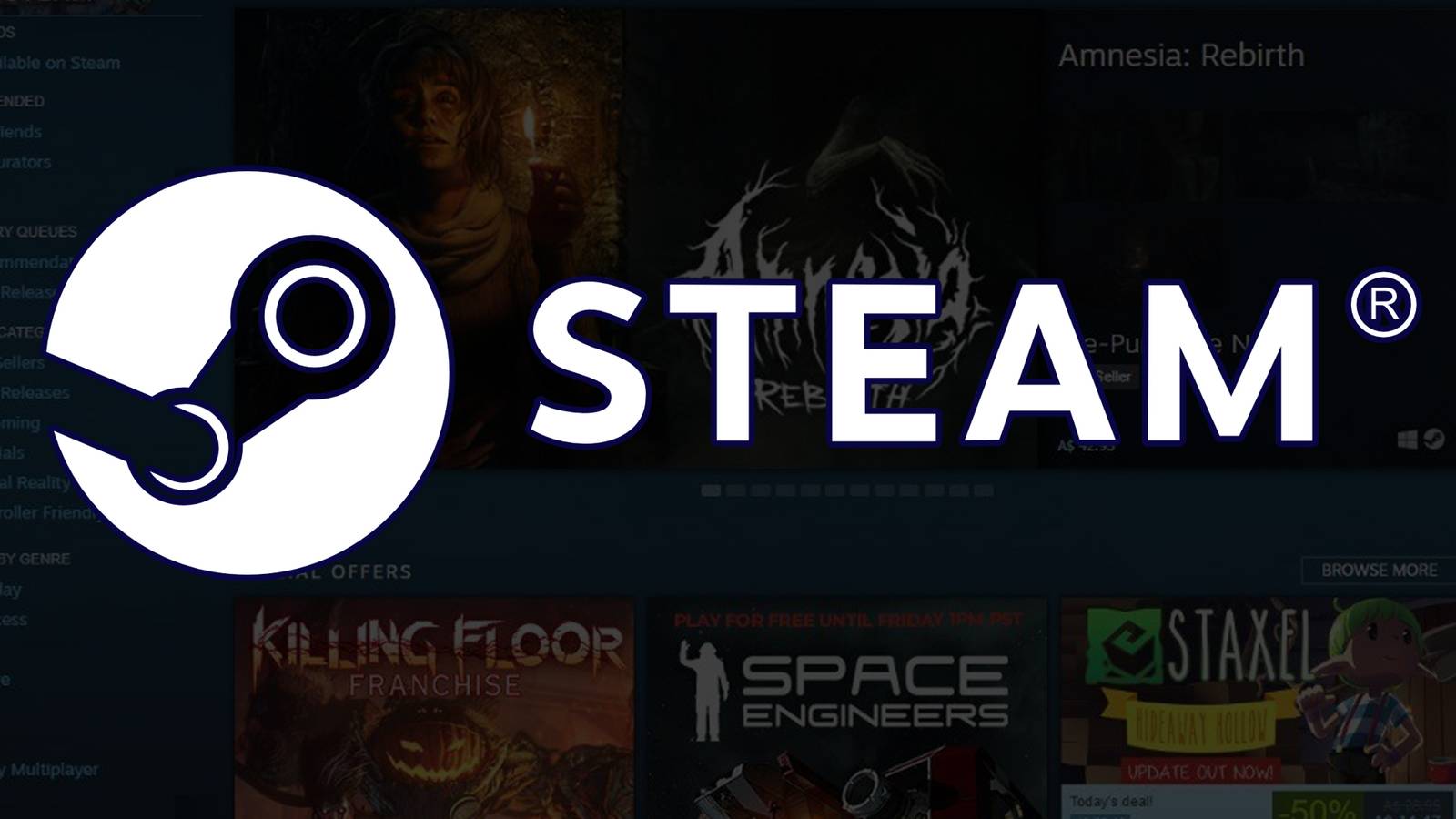

If you have been watching Bank of China’s stock, you are not alone. Whether you are considering buying in, holding, or wondering if it is time to lock in some profits, the last few years have given you plenty to think about. With share prices rising more than 23.8% in the past year and an outstanding 163.2% over the last five years, Bank of China has outperformed many expectations. Just this past week, shares nudged up another 2.6%, echoing a positive sentiment that has been building among investors.
Some of this optimism is tied to ongoing global financial shifts, where Chinese banks are seeing stronger capital inflows and a broad wave of strategic government support. Recent headlines highlight regulatory efforts aimed at reinforcing the stability of major banks, and Bank of China stands to benefit from both its size and its international footprint. These factors are changing how many investors perceive risk in the Chinese banking sector. They are also making those return numbers even more interesting.
With a value score of 5 out of a possible 6 checks for undervaluation, Bank of China already looks compelling compared to its peers. Next, let’s break down how that score came together using classic valuation approaches. As you will see, there may be an even more insightful way to look at the company’s worth.
Why Bank of China is lagging behind its peers
The Excess Returns valuation model measures how much return a company generates above the cost of its equity. This makes it a useful way to assess whether shareholders are getting a worthwhile reward for their investment risk. For Bank of China, this approach focuses on several key metrics drawn from forward-looking analyst expectations and historical performance.
Currently, Bank of China has a book value of HK$8.19 per share and a stable earnings per share (EPS) estimate of HK$0.75, based on a consensus of 14 analysts. The cost of equity is calculated at HK$0.78 per share, resulting in a modest excess return of HK$-0.02 per share. The company’s average return on equity is a solid 8.26%, with forecasts projecting a stable book value moving up to HK$9.11 per share, sourced from 11 analyst estimates.
Applying the Excess Returns model to these figures suggests an intrinsic value significantly higher than the current market price. The model estimates Bank of China’s stock to be approximately 53.8% undervalued. This result suggests the market may be underestimating the company’s capacity to generate returns on equity, especially relative to its peers and the industry average.
NEW DELHI, Oct. 25 (Xinhua) — Indian police on Saturday said a motorcyclist who molested two Australian women cricketers in the central state of Madhya Pradesh has been arrested.
The two cricketers from the Australian women’s national team…

Bank Polska Kasa Opieki has recently seen a slight decrease in its consensus analyst price target, shifting from PLN 210.03 to PLN 207.78. This change comes as analysts weigh the bank’s robust historical revenue growth and stable asset quality, while also considering uncertainties brought on by evolving market conditions. Stay tuned to discover how you can continue monitoring key updates and shifts in the bank’s investment outlook.
Recent analyst activity reflects a reassessment of Bank Polska Kasa Opieki’s stock, factoring in both the company’s historical strengths and shifting market sentiment.
🐂 Bullish Takeaways
Analysts have previously rewarded Bank Polska Kasa Opieki for strong execution, consistent historical growth in revenue, and maintaining stable asset quality.
Positive mentions have often cited disciplined cost control and transparency, which support the bank’s resilient operating profile.
Some analysts acknowledge that while upside potential exists, much of it may be priced in at current valuation levels. This warrants a more balanced view going forward.
🐻 Bearish Takeaways
Oddo BHF downgraded Bank Polska Kasa Opieki to Neutral from Outperform on October 22, 0025, assigning a price target of PLN 200. This signals a more cautious stance on near-term upside.
The downgrade reflects elevated concerns about the bank’s valuation and the potential that recent market optimism may have already been factored into the share price.
Do your thoughts align with the Bull or Bear Analysts? Perhaps you think there’s more to the story. Head to the Simply Wall St Community to discover more perspectives or begin writing your own Narrative!
Bank Polska Kasa Opieki S.A. has announced a Special/Extraordinary Shareholders Meeting, which will take place on November 6, 2025, at 10:00 Central European Standard Time. The gathering is expected to address key strategic decisions for the bank’s future.
Analyst consensus price targets for Bank Polska Kasa Opieki have slightly declined, reflecting both steady performance fundamentals and increased market uncertainty.
Recent shifts in analyst outlooks, including a rating downgrade from Oddo BHF, highlight a cautious approach to the bank’s medium-term prospects amid valuation and market sentiment concerns.
The consensus analyst price target has decreased slightly from PLN 210.03 to PLN 207.78.
The discount rate has edged up marginally from 9.44% to 9.45%.
The revenue growth expectation has risen from 1.99% to 2.68%.
The net profit margin has decreased from 41.04% to 40.38%.
The future P/E ratio has declined modestly from 10.61x to 10.46x.

Illumina (ILMN) is capturing attention following the debut of its proprietary 5-base sequencing solution and impressive results from GeneDx’s pilot of the constellation platform. Both developments were showcased at the American Society for Human Genetics meeting.
See our latest analysis for Illumina.
Illumina’s shares have seen a notable rebound in recent weeks, logging a 9% gain over the last month as investors responded to a flurry of new product launches and encouraging partnerships. However, the stock is still down 24% on a year-to-date share price return basis, and its one-year total shareholder return stands at -29%, reflecting the longer road ahead for a sustained turnaround.
If Illumina’s fresh innovation streak has you watching the sector, it could be the perfect moment to browse other breakthroughs. See the full list of healthcare movers in See the full list for free.
But with Illumina’s fundamentals still recovering and shares trading below analyst price targets, investors are left to consider: is there real upside from here, or is future growth already priced into the stock?
Illumina’s narrative-based fair value estimate lands at $111.95, which is about $12 above the last close of $100.11. This gap spotlights perceived upside in the current share price versus analyst consensus.
Ongoing innovation, multiomics expansion, and operational efficiency are enhancing gross margins and creating new growth opportunities. Strategic expansion into multiomics, notably the planned acquisition of SomaLogic and integration of proteomics capabilities, creates incremental growth opportunities by increasing the breadth of Illumina’s data and platform offerings, contributing to future revenue and operating margin expansion.
Read the complete narrative.
Curious which bold, forward-looking financial shifts power this valuation? The answer lies in a mix of aggressive margin bets, platform scale-up strategies, and the kind of future earnings moves you might not expect. The most debated projections are all embedded here. Click through to discover what really drives this narrative.
Result: Fair Value of $111.95 (UNDERVALUED)
Have a read of the narrative in full and understand what’s behind the forecasts.
However, persistent funding constraints and mounting regulatory hurdles in China still pose meaningful risks that could alter Illumina’s long-term trajectory.
Find out about the key risks to this Illumina narrative.
If you see things differently or want to run your own numbers, it’s quick and easy to craft a unique Illumina outlook in just minutes with Do it your way.

Uranium Energy (UEC) shares climbed 3% at the open, catching attention after a strong performance this year. With uranium prices in focus across the market, investors are watching to see if this momentum can continue.
See our latest analysis for Uranium Energy.
Uranium Energy’s share price has charged ahead this year, notching a year-to-date gain of 79.3%, and its 3-year total shareholder return sits at an impressive 223.7%. Recent volatility has been part of a broader surge in uranium equities, as shifting sentiment and renewed interest in the sector have pushed momentum higher instead of fading.
If the strength in uranium has you curious, it might be the perfect moment to expand your search and discover fast growing stocks with high insider ownership
The question now is whether Uranium Energy’s rally still leaves the shares undervalued, or if the current price already reflects all of the company’s future growth potential. Is there genuine upside left for buyers, or is the market a step ahead?
At a price-to-book ratio of 6.7x, Uranium Energy shares are trading at a premium to both industry peers and the broader sector. The last close price of $13.66 positions the stock in expensive territory on this metric, prompting a closer look at whether such a valuation holds up given where the company stands today.
The price-to-book ratio measures the market value of a company’s equity relative to its net assets. For resource-focused companies like Uranium Energy, where asset values play a crucial role, this multiple provides an essential snapshot for investors assessing whether the stock’s market value makes sense given its asset base.
Uranium Energy’s price-to-book of 6.7x is above the average for its peer group (5.8x) and far exceeds the broader US oil and gas industry average of 1.4x. This reflects a hefty premium. If the market were to move toward a lower, more typical level, it would represent a significant re-rating lower for the stock.
See what the numbers say about this price — find out in our valuation breakdown.
Result: Price-to-Book of 6.7x (OVERVALUED)
However, if uranium prices retreat or investor enthusiasm subsides, Uranium Energy’s premium valuation could quickly come under pressure and alter the narrative ahead.
Find out about the key risks to this Uranium Energy narrative.
Switching lenses from asset multiples to our DCF model, Uranium Energy appears to be trading almost exactly at its calculated fair value. While the price-to-book ratio signals overvaluation, the discounted future cash flows suggest UEC could be fairly priced. Will the market follow the fundamentals, or do investors still expect more upside?

When done well, 2.5D games look really stunning. I think I started appreciating the style when Bravely Default released, and since then, people have been doing really amazing things with the tech, which is excellent, because more gorgeous mixes…

Rumble (RUM) has caught investor interest lately as its shares shift slightly after a period of muted returns. The platform continues to generate buzz, prompting a closer look at where its financials and fundamentals stand this year.
See our latest analysis for Rumble.
The past year has been a wild ride for Rumble’s investors. While the share price currently sits at $7.14 after some recent swings, the stock has notched a 25.7% total shareholder return over the past 12 months, even though momentum has cooled from its earlier highs. Despite softer recent price movement, Rumble’s ability to generate long-term gains suggests the market is weighing both its growth potential and shifting risk outlook.
If you’re thinking about branching out from the usual names, consider expanding your toolkit and discover fast growing stocks with high insider ownership
With Rumble’s stock still far below analyst price targets despite recent gains, the debate remains: is there an overlooked buying opportunity here, or has the market already factored in all of Rumble’s future growth?
With the consensus narrative setting Rumble’s fair value at $14.50, the gap from its recent $7.14 close is too wide to ignore for investors watching for a potential breakout.
*The upcoming launch of Rumble Wallet, with integrated crypto tipping and international payments, is poised to increase global user acquisition and drive engagement by tapping new markets where decentralized, creator-driven monetization is highly valued. This could accelerate top-line revenue growth and expand the platform’s total addressable market.*
Read the complete narrative.
Curious what powers such a bullish narrative? The bold forecast hinges on aggressive new features, partnerships, and a financial roadmap packed with ambitious growth assumptions. Will the platform’s reinvention really deliver such outsized upside, or are there hidden risks baked into the price target? Find out which forecasts drive the gap. These could change how you view Rumble’s potential.
Result: Fair Value of $14.50 (UNDERVALUED)
Have a read of the narrative in full and understand what’s behind the forecasts.
However, Rumble’s aggressive global expansion and increasing operational costs could jeopardize its path to profitable growth if ambitious targets are not met.
Find out about the key risks to this Rumble narrative.
Looking beyond fair value estimates, Rumble trades at a price-to-sales ratio of 23.2x. This is much higher than both its industry peers at 1.4x and its own fair ratio of 1.3x. This suggests investors are paying a big premium for future growth. Does this make the risk worth it, or is caution better here?

Earlier this month, Brookfield Asset Management and Bloom Energy announced a collaboration involving up to US$5 billion to deploy Bloom’s advanced fuel cell technology for the next generation of artificial intelligence data centers worldwide.
This partnership signifies a major shift toward integrating reliable, rapidly deployable onsite power with compute infrastructure, aiming to address the surging global energy needs driven by AI advancements.
We’ll explore how Brookfield’s large-scale investment in fuel cell-powered AI infrastructure could alter Bloom Energy’s projected growth and profitability outlook.
The end of cancer? These 27 emerging AI stocks are developing tech that will allow early identification of life changing diseases like cancer and Alzheimer’s.
To be a shareholder in Bloom Energy today, you have to believe that demand for resilient, scalable onsite power, driven by the AI data center boom, will remain strong, and that Bloom’s solid-oxide fuel cell technology can carve out a significant role even as clean energy competition grows. The recent US$5 billion Brookfield partnership is a headline-grabbing endorsement, but analysts highlight that it is an early-stage memorandum with only gradual impacts expected for near-term results. The greatest short-term catalyst is continued expansion into AI infrastructure, while the biggest current risk remains rapid advancements in zero-emission battery and renewables technologies that could erode the market for Bloom’s natural gas-based solutions.
Among Bloom’s recent client announcements, its agreement to deploy fuel cells at Oracle Cloud Infrastructure data centers stands out, underscoring both urgency in AI-linked power needs and the company’s ongoing traction with marquee technology clients. This supports the thesis that hyperscaler adoption, and successful execution on these high-visibility projects, could quickly influence both Bloom’s revenue outlook and investor sentiment.
But just as the opportunity in AI is growing, investors should also watch for signs the market could shift if the pace of battery innovation accelerates…
Read the full narrative on Bloom Energy (it’s free!)
Bloom Energy’s outlook anticipates $2.7 billion in revenue and $395.4 million in earnings by 2028. This scenario is built on analysts’ assumptions of a 19.0% annual revenue growth rate and an earnings increase of about $371.7 million from the current $23.7 million level.
Uncover how Bloom Energy’s forecasts yield a $76.83 fair value, a 30% downside to its current price.